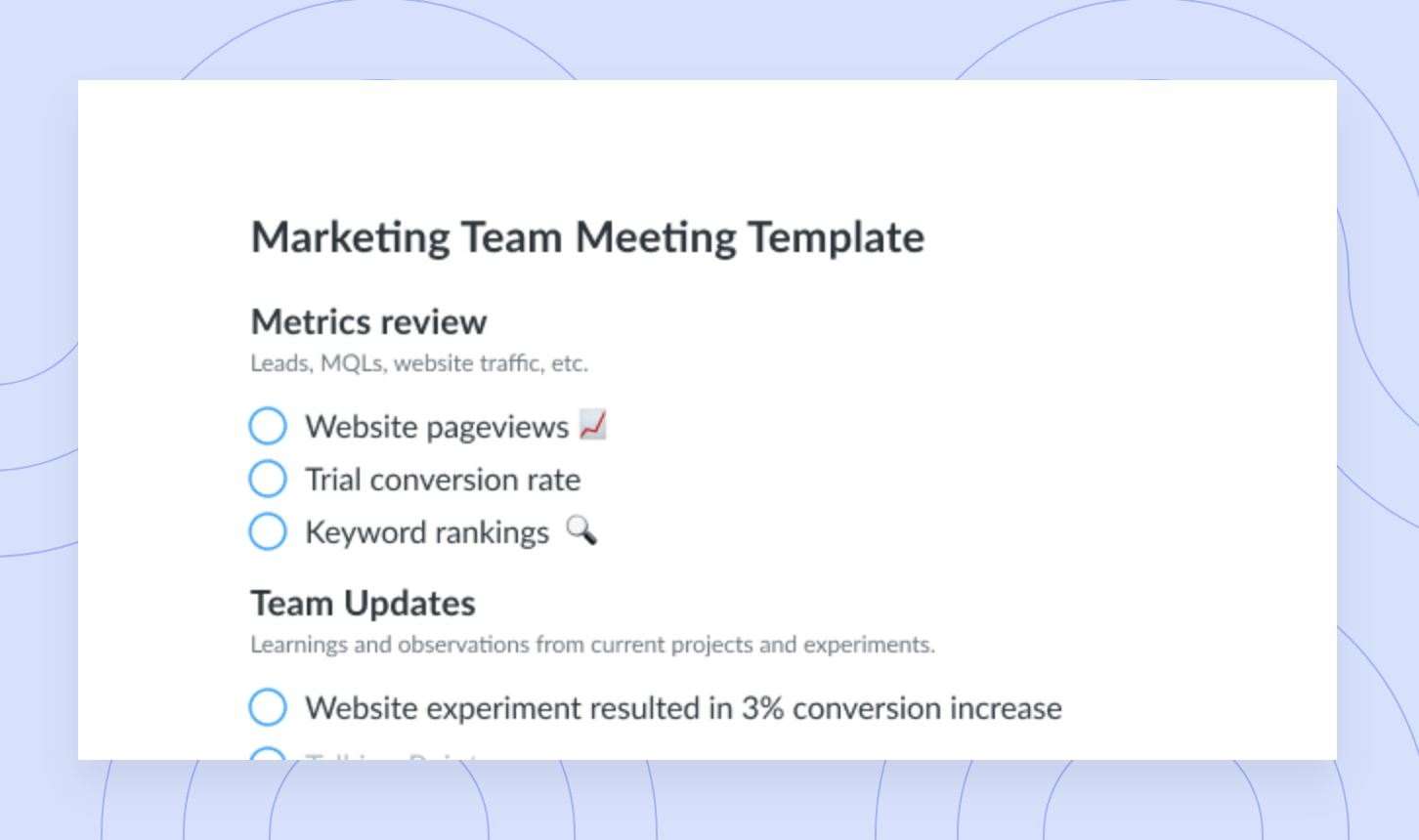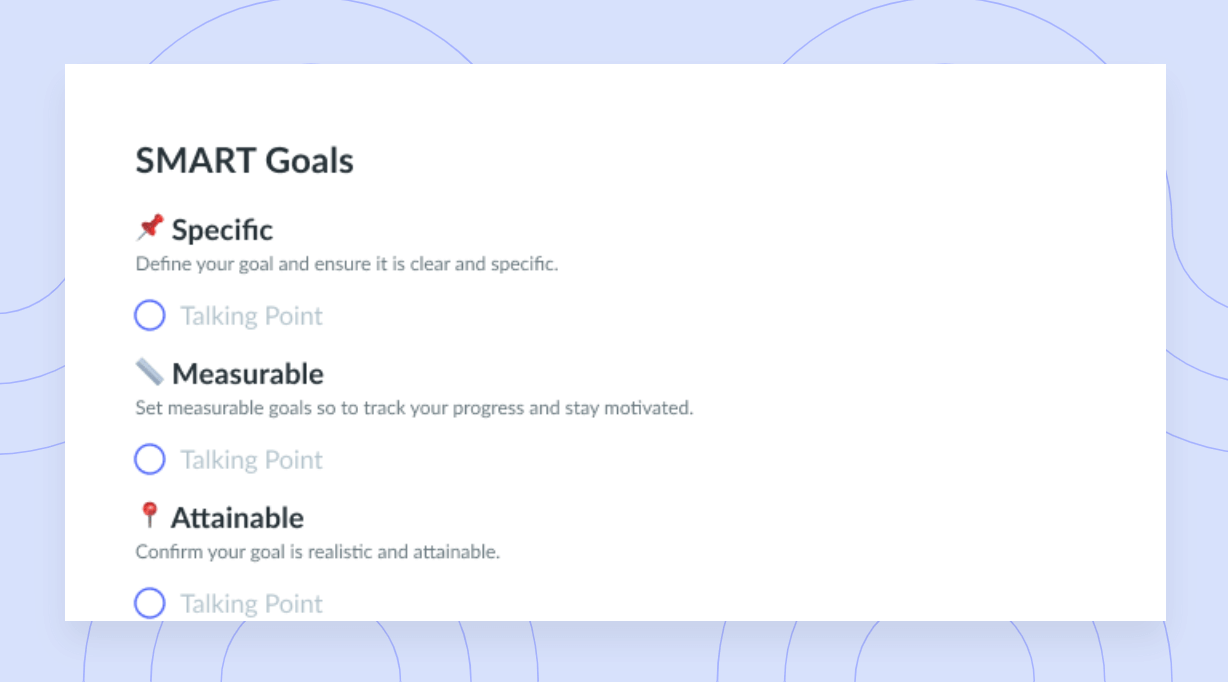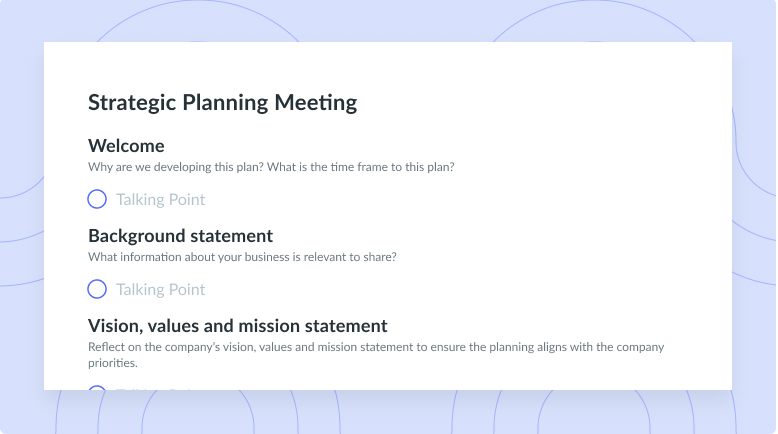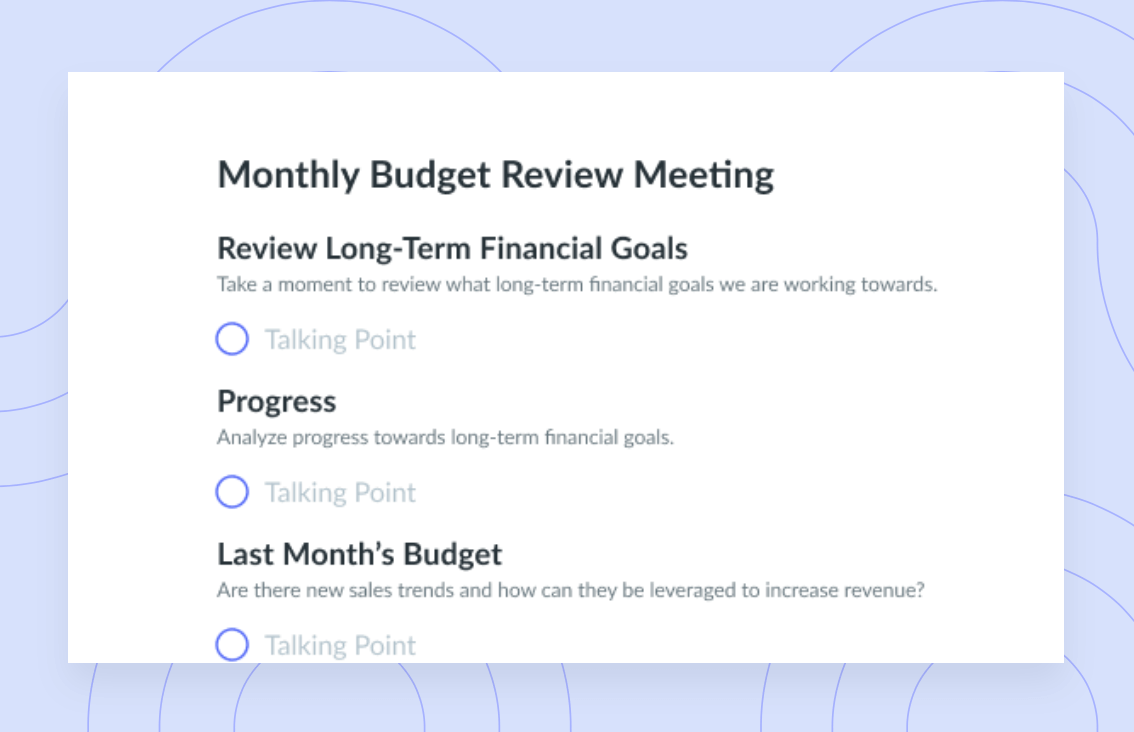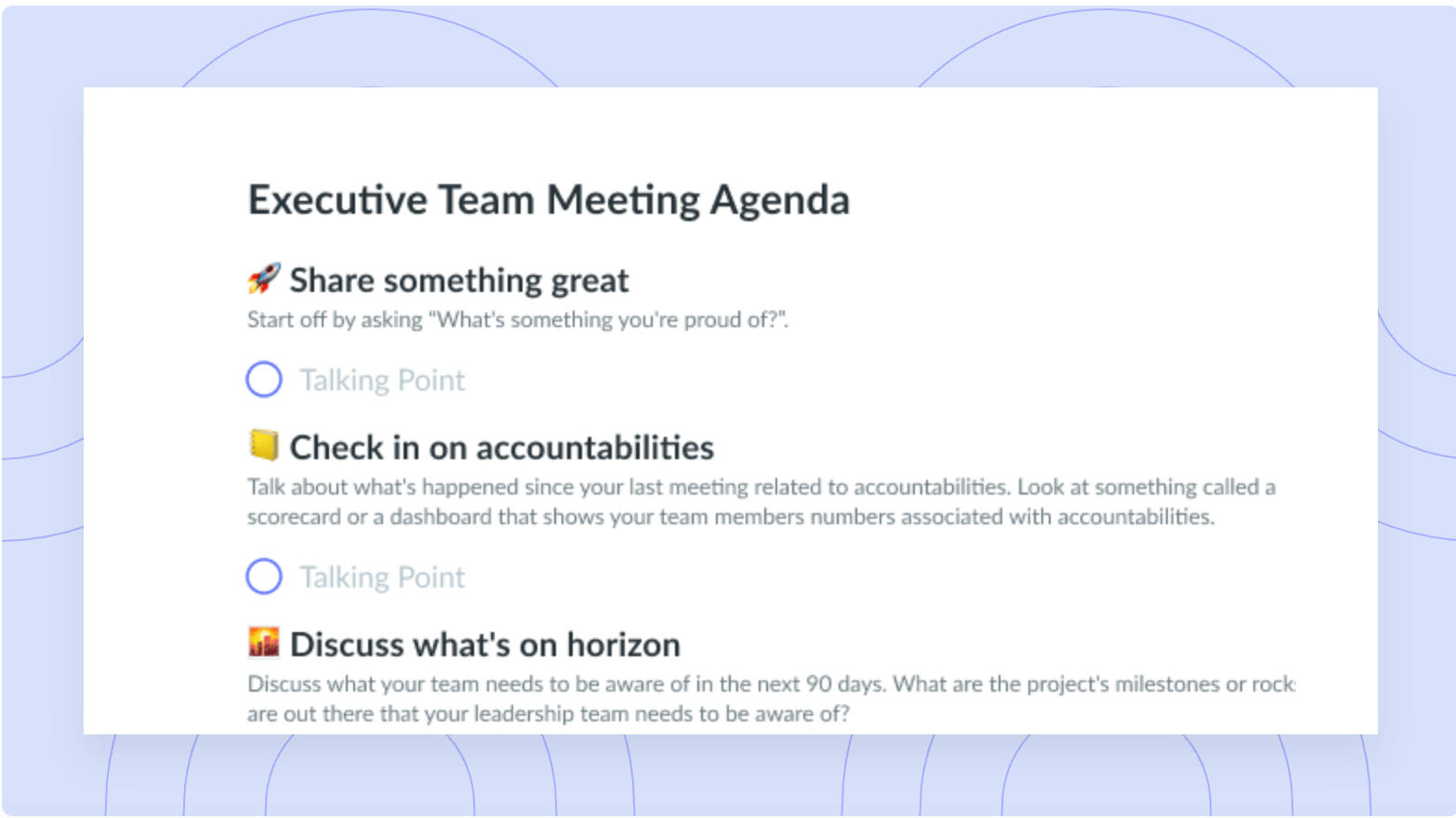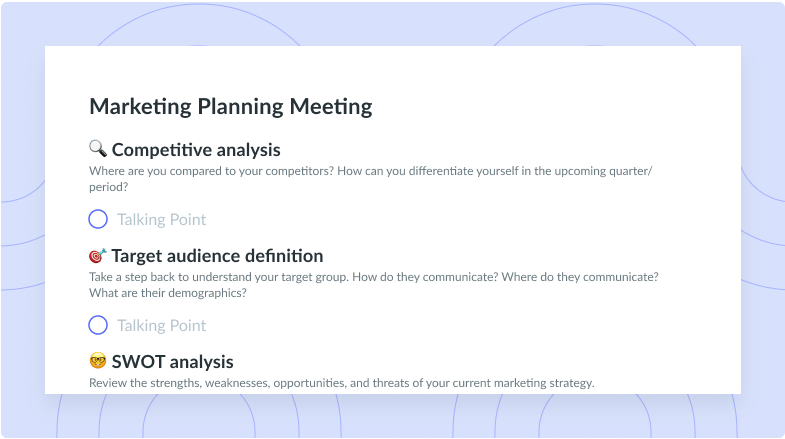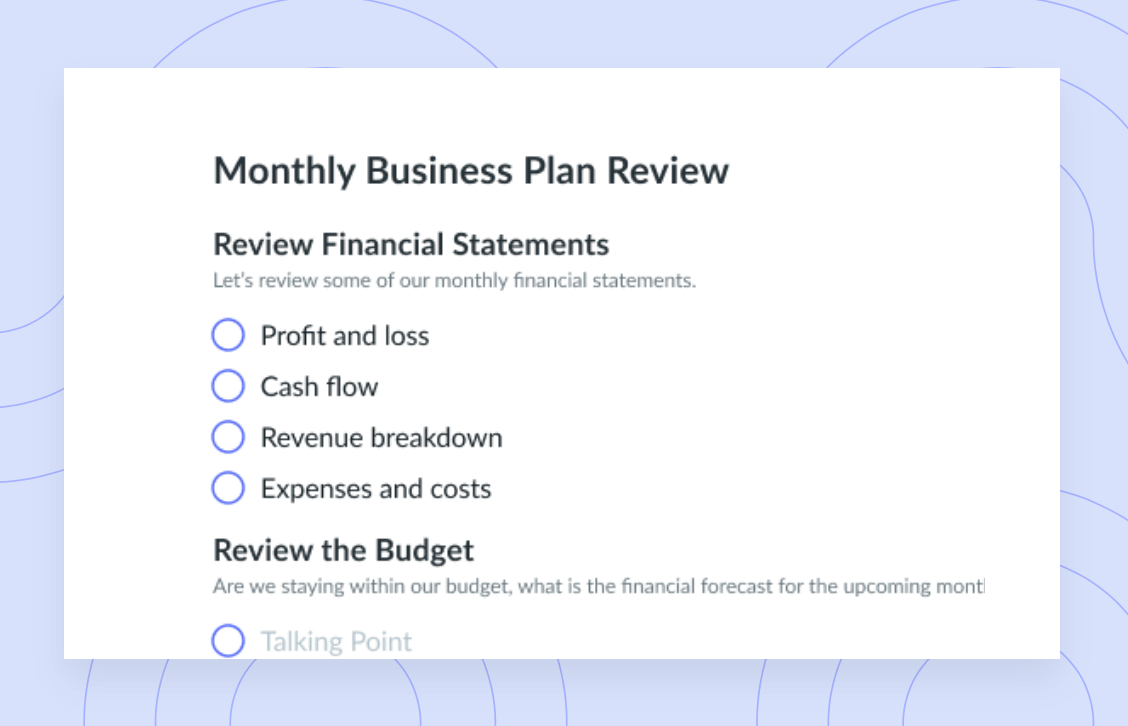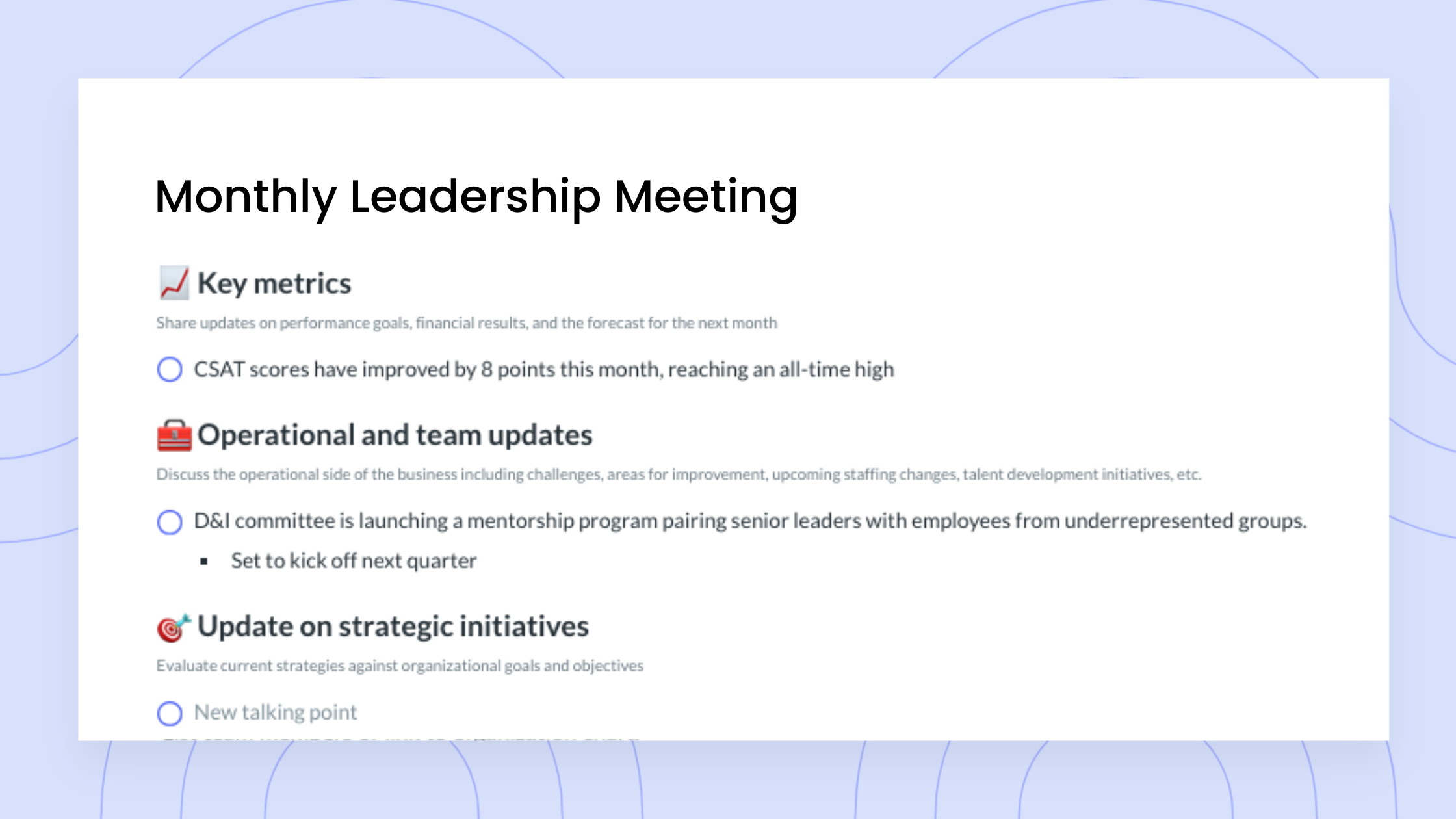Operations Goals vs. Strategy Goals: How to Set Each + Examples
Knowing the difference between operations vs. strategy goals helps you get aligned and achieve them faster!
Without a goal, how are you supposed to know when you’ve hit success? Where is your finish line, and how do you know you’re on the right path to get there?
For a lot of businesses, goal setting isn’t structured, which means employees are confused about what goals to aim for, they aren’t sure what milestones are in place, and they don’t even know what to do to get on the road to success.
Unsurprisingly, though, having long-term goals really improves short-term drive for the company. Here we’re going to help more companies achieve a great goal-setting structure, so read on to learn about two types of goals to set and how to use each to help you move your company forward.
- Operations goals vs. strategy goals
- The differences between operations and strategic goals
- How to set operations goals
- How to set strategic goals
- Examples of operations and strategic goals
- Free goal-setting meeting agenda template
Operations goals vs. strategy goals
1Operations goals
You can think of operations goals as the milestones that help you identify if you’re on the right track to success. For this article, let’s rely on the example of running a marathon. To be able to run a marathon, you’ll need to do some smaller things first. For one, you might have a strict training schedule to practice your long-distance runs. This training schedule will likely be broken into milestones. How do you know you’re ready to go from 10 km to 20 km runs? Is it measured by how fast you can run 10 km or how good you feel after running it? This milestone is an operations goal that signifies you’re putting in the right kind of work (training) to get an output (faster run time) that is progressing towards your end goal (the ability to run a marathon).
2Strategic goals
Strategic goals, on the other hand, aren’t implemented directly in day-to-day life. They’re more of hidden, underlying reasons why you’re doing what you’re doing. And strategic reasons are then reflected onto every operations goal.
So in this case, the strategic goal is to run a marathon. The success of progress towards completing the strategic goal is measured by the completion of the operations goals leading up to the end goal.

Track objectives as part of your meeting workflow
Stay on top of your team’s goals by clearly recording, defining, and tracking the progress of your OKRs in Fellow’s Objectives tool.
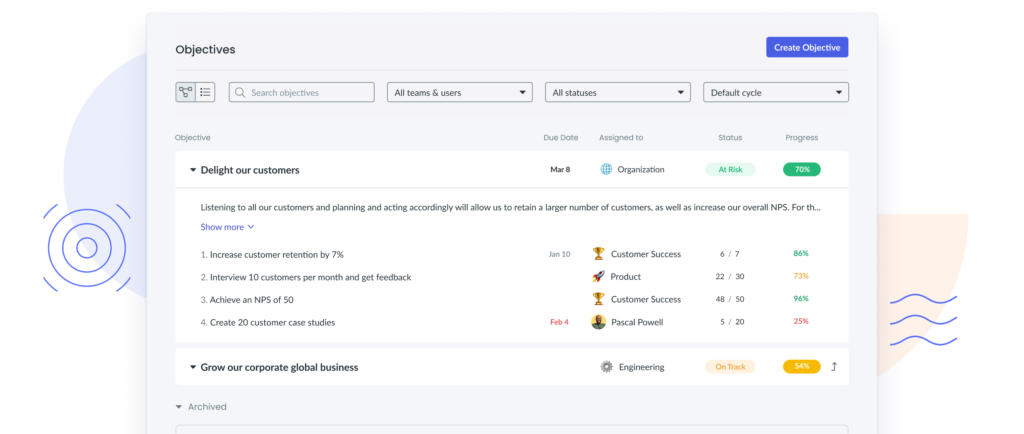
The differences between operations and strategic goals
The main difference between operations and strategic goals is in how they relate to each other. Strategic goals are determined first (that is, you consider where you want to end up), and operations goals are built to align with the strategy (that is, you determine how you know you’re on the right path). Sometimes, though, practicing our operations goals will give us insights into some strategic approaches that may be more or less effective, and therefore cause us to pivot our strategy mid-project.
Operations goals are also shorter term, with many tactics and activities needed throughout the whole journey to complete the overarching strategic goal. Strategic goals, on the other hand, will take a lot longer to achieve.
How to set operations goals
- Review employees’ skills
- Assign goals to employees or groups that are best suited for them
- Designate tasks to each goal
- Track progress
1Review employees’ skills
First, get a really good understanding of what your teammates are best at and where they want to be later in their careers. This is a great opportunity to give your employees some exposure into project tasks that can support their short- or long-term career development goals. In fact, getting to practice a career development activity is also an operations goal on the journey towards the strategic goal of a higher career level!
You can use one-on-one meetings as a designated time to learn about what skills your employees want to work on and where they might make the best fit.
2Assign goals to employees or groups that are best suited for them
What might be really needed for the project might not be immediately apparent. Every operational project is unique and needs a thoughtfully developed team to support the specific needs of the project. A strong manager who is well informed on the unique values and abilities that their employees contribute to the team will be able to form great project teams. For example, in a marketing team, a manager could delegate a social media engagement to someone that is skilled at finding ways to get followers commenting.
Marcus Buckingham refers to this as a need to play chess rather than play checkers as a manager. Where in checkers all pieces are the same and interchangeable (employees who are not different from each other), chess pieces are each unique and have special abilities to contribute to the team (diverse employees with a wide range of experience and knowledge).
3Designate tasks to each goal
Tactical goals can be assigned within each milestone period. For example, someone running a marathon would first need to buy shoes and training equipment. This includes tasks such as research, evaluation, and purchasing. This step completes the operations goal of ensuring the right tools are in place. If the next operations goal is to benchmark current running abilities, maybe the individual would set up tasks to do, like run 1 km, then 5 km and run in various weather conditions—like on a hot day or a cold day. Or, if the operations goal is to improve the company’s branding, the first task could be to create a logo that fits with the company’s guidelines.
4Track progress
In each milestone, you’ll learn new evidence to help you succeed in future tasks. Because of this, it’s very likely that you might see your project plan change as you start working. Let’s go back to the example of training for a marathon: If you see you have knee problems in your first 1 km or 5 km run, you might need to extend the plan with an operations goal of evaluating health or add in a mitigation strategy.
At work, it’s important to track what went well or didn’t go so well so you can continue to improve in future tasks. Be transparent with your team about when a project is not going according to plan so you can pivot early and remain agile. Rely on a tool such as Fellow to track the important details of your progress to best help your team view and retain these details during progress meetings.
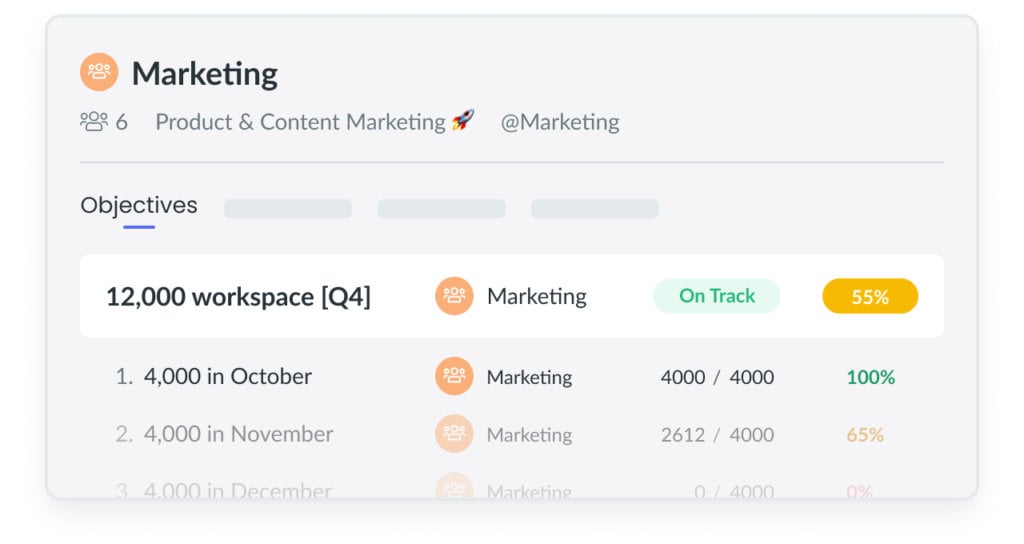
How to set strategic goals
- Consider your company’s long-term vision
- Create actionable goals
- Create measurable goals
- Create purpose-driven goals
- Track progress
1Consider your company’s long-term vision
For company leaders, this means looking at your entire industry. Where do you want to be in 5 years? Are you aiming to be the revenue leader in your space? Or maybe you want to be the first to release in a new category?
For a manager or team lead, consider how this company vision impacts your team. For example, is your team expected to be a large revenue contributor, and if so, do you need to scale your operations? Or is your strategy to build subject matter experts in-house to support the invention of your new product category? Think of where your team specifically needs to get to in order to support the overarching company goal.
2Create actionable goals
Break down high-level strategic concepts into something tangible. This makes it easy for your team members to digest the concepts and apply them to their work, and for upper management to see that you’re working towards the common goal. Some examples of actionable goals include:
- If your strategy is to reduce your company’s carbon footprint, an actionable goal is to reduce production of printed marketing materials by 50%.
- If your strategy is to be an industry leader in a new product category, an actionable goal is to conduct interviews with subject matter experts and future potential customers.
3Create measurable goals
How do you know if you’re on the path to success? Metrics.
Making your goals measurable is one part of creating SMART goals. This also means having goals that are specific, achievable, realistic based on your current context, and time-based. Giving a time frame for your activity to be completed will help you know how impactful the action was on the result and allow you to decide if you’re ready to move forward with the next phase of the project.

4Create purpose-driven goals
Having purpose in the work you’re doing is important anytime—whether you’re planning meetings, setting strategic goals, or working on a daily task. Your purpose is the “why” the activity is completed. It should answer:
- Why is this an important goal?
- Why are we doing it now and not any other time?
- What impacts will it have on other project elements (other goals, people, etc.)?
- Is this a valuable use of our time?
5Track progress
Just like with operations goals, strategic goals need to have systems in place to track and monitor the progress, direction, and results of the strategic plan. Setting regular strategy review meetings is one way to keep your team focused and aligned. This type of meeting can be conducted on a company-wide level as well as a team- or department-specific level. It’s also a great time to consider a pivot in strategy if there are new blockers or evidence to help guide that decision.
Examples of operations and strategic goals
Examples of operations goals
- Identify one marketing channel with a high revenue opportunity
- Implement a recycling program
- Create an employee training program
- Make the production process more cost-efficient
Examples of strategic goals
- Build a repeatable lead-generation engine
- Reduce the company’s carbon footprint
- Define a clear organizational culture with which the whole company aligns
- Increase product margins to improve profit
Free goal-setting meeting agenda template
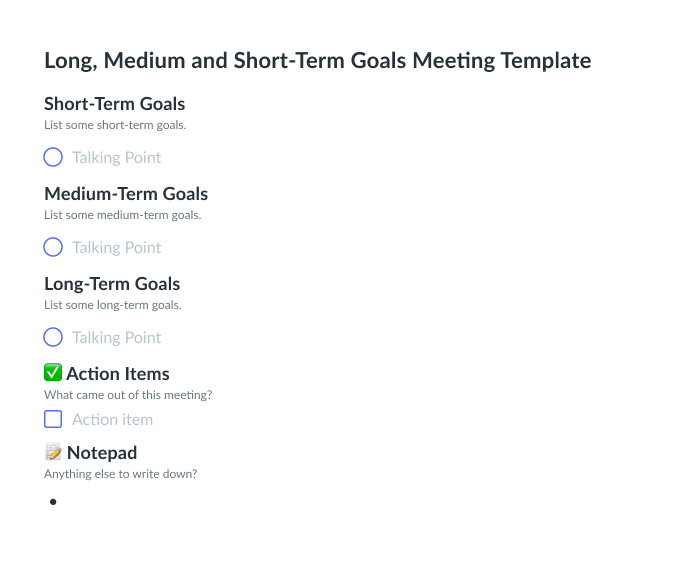
Parting advice
Whether you lead a company or a team within a company, it’s important to have a solid understanding of how operations and strategic goals can shape your daily work and long-term progress. Strong communication, transparency, and progress-tracking systems shared between team members will help your team remain aligned. Having this communication and these systems in place will also help increase the flow of information sharing so your team and others can interpret new evidence and respond immediately if they need to shift strategy or operations activities.
![Short-Term vs. Long-Term Goals [+ Examples]](https://fellow.app/wp-content/uploads/2022/06/Short-Term-vs.-Long-Term-Goal.jpg)




![Quarterly Planning: Ultimate Guide for 2024 [+Free Template]](https://fellow.app/wp-content/uploads/2023/03/GUIDETO-QUARTERLY-PLANNING2.jpg)



